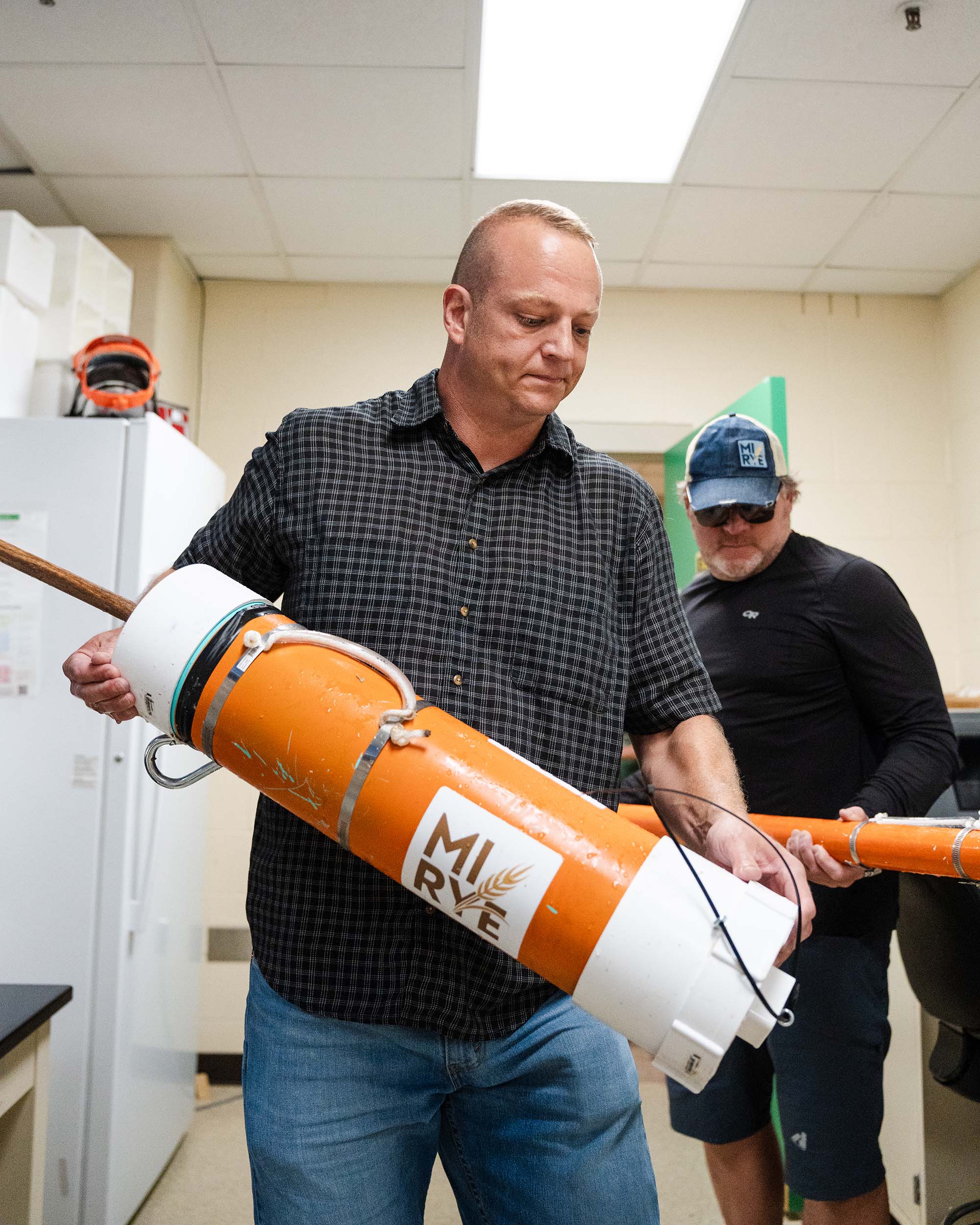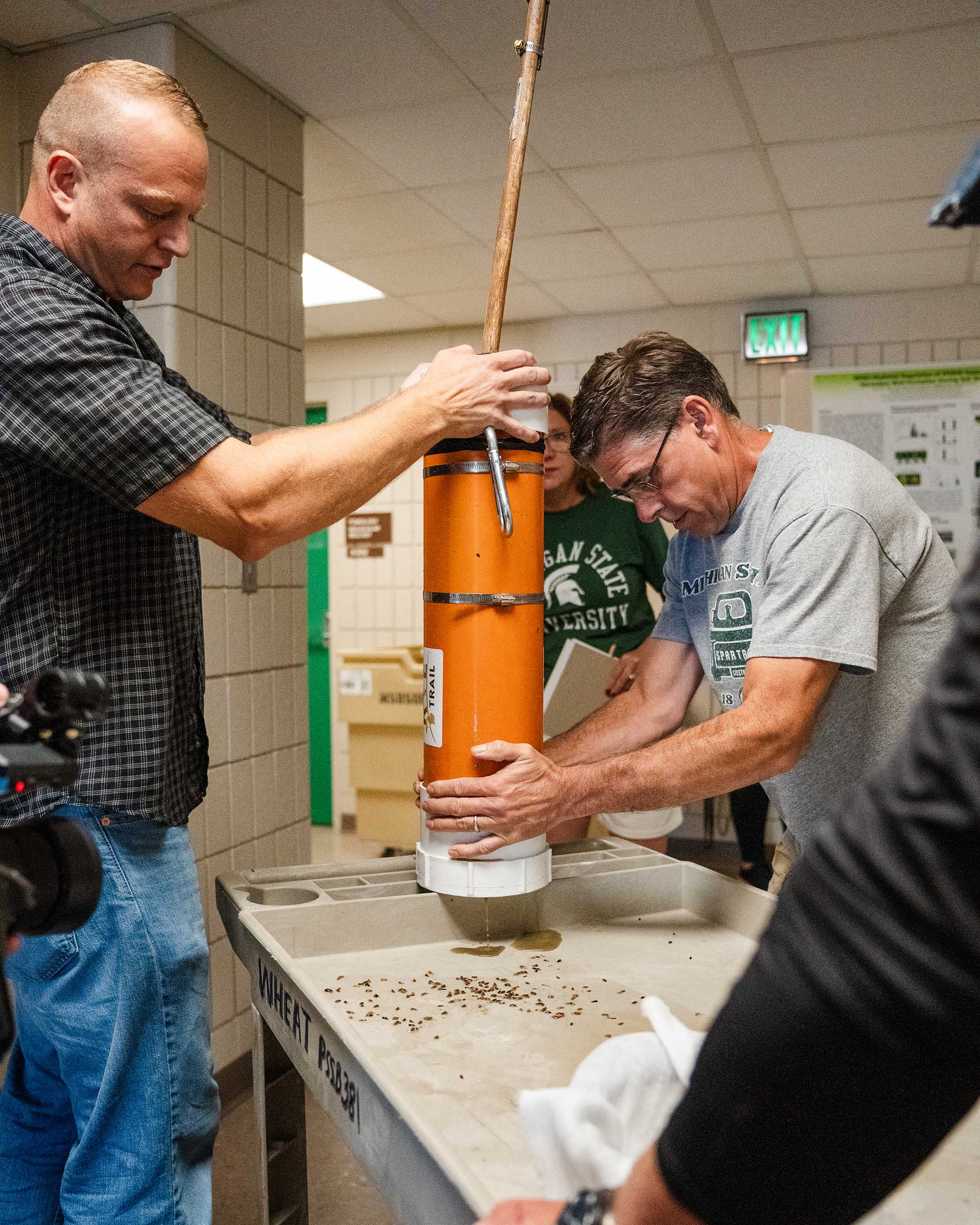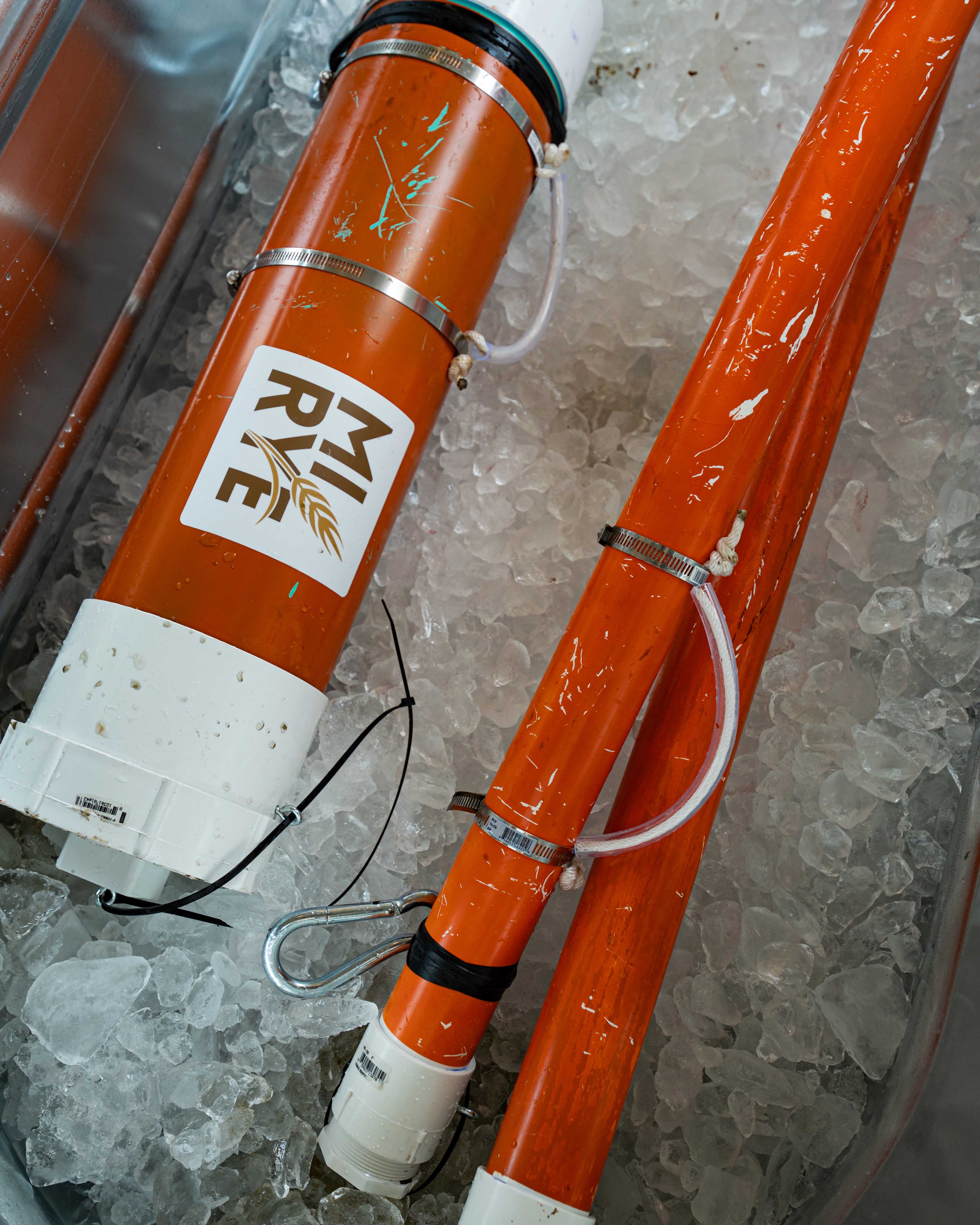Rye seeds recovered from the Bentley shipwreck site. Photo by Nick Schrader.
In 1909, Joseph Rosen, a former student of Frank Spragg, a plant breeder at MSU — then called Michigan Agricultural College — sent Spragg a sample of rye seeds from Russia. Spragg named the rye after Rosen and planted the first crops in Michigan in 1912.
However, rye was difficsult to grow because it cross-pollinated easily, which reduced the quality of the crop. Spragg knew that he needed to find a way to isolate the rye crop to protect it. And he and Rosen found the perfect spot — South Manitou Island — an 8-square-mile island located in Lake Michigan about 17 miles west of Leland. Spragg was sure the isolated island would prevent cross-pollination, and it did.
The rye was a success, and by the mid-1910s, Michigan was the largest rye-producing state in the country, largely due to MSU. But around 1970, farmers stopped because “nobody would pay them to grow it,” Munger said. “They would make more money selling corn and soybeans because that’s what the market demanded.”
Finding the Rosen rye
Rosen rye might have been lost forever if it wasn’t for Ari Sussman, Munger’s collaborator at Mammoth Distilling in Central Lake, near Traverse City.
“Ari was at MSU looking for old advertisements in popular magazines when he came across a 1934 Christmas issue of Vanity Fair with an ad for Schenley Whiskey, which was one of the big brands at the time,” Munger said. “The ad had a picture of the label that read, ‘This whiskey made from the purest rye on earth from South Manitou Island in Michigan, Rosen rye.’ We had never heard of Rosen rye, and it also wasn’t well known in the industry either. We were amazed that it was once grown right in our own backyard.
“We both immediately recognized that this was significant because we’re always looking for a way to use local grains and weave storytelling in the whiskey we make.”
Resurrecting the Rosen rye
Munger set out to see if Rosen rye seeds still existed somewhere and they did — in a U.S. Department of Agriculture seed bank in Idaho.
“I contacted them, and they told me a little bit about where they had gotten them from, which happened to be MSU,” Munger said. “The seeds came to the USDA from the original MSU seed bank. As soon as I heard that, I started calling around MSU.”

Eric Olson carries the tube containing the Bentley rye seeds into the lab at MSU. Photo by Jonah Brown.
And that’s when he found Eric Olson, associate professor in plant, soil and microbial sciences in the College of Agriculture and Natural Resources.
Munger gave Olson a tiny manila envelope from the USDA that contained 20 grams of seeds, which equals only approximately 20 seeds.
“We showed Eric the seeds and asked, ‘Hey, can you do this? Can you bring this back to viability on a commercial scale and is it worth it?’ And of course, he said yes.”
“We grew those 20 seeds to 200 then to 2,000,” Olson said. “Over time, we were able to grow enough to plant them back on South Manitou Island.”
Though the Rosen rye resurrection was a success, Olson said getting the Bentley rye seeds to germinate was going to be exceedingly more difficult.
“We didn’t have to go to the depths of Lake Huron to get the Rosen rye seeds,” Olson said. “We also didn’t have to overcome the technical challenges of trying to break seed dormancy and revive the seed, so Rosen rye had a big head start, and the Bentley seeds are much older than the Rosen seeds were.”
Resurrecting the Bentley rye

Olson and team begin to extract the rye seeds. Photo by Jonah Brown.
When Olson saw the seeds pour out of the tubes, just hours after being rescued from their watery grave, he said it was “like winning a million-dollar jackpot.”
“It was remarkable to see those seeds pouring out. It was so exciting to potentially achieve what we set out to do, which was to revive this variety and bring back a piece of agricultural history,” he said. “The Bentley seeds capture an agricultural era that precedes Rosen, one that didn’t have much mechanization. The idea of the seeds germinating is so exciting, but the odds are stacked against us because they’ve been underwater for 145 years.”
To resurrect the seeds, Olson and his team placed them in germination boxes and soaked them in gibberellic acid, which is a plant hormone that breaks down seed dormancy and stimulates germination. Olson said it’s like “Miracle-Gro on steroids.”






